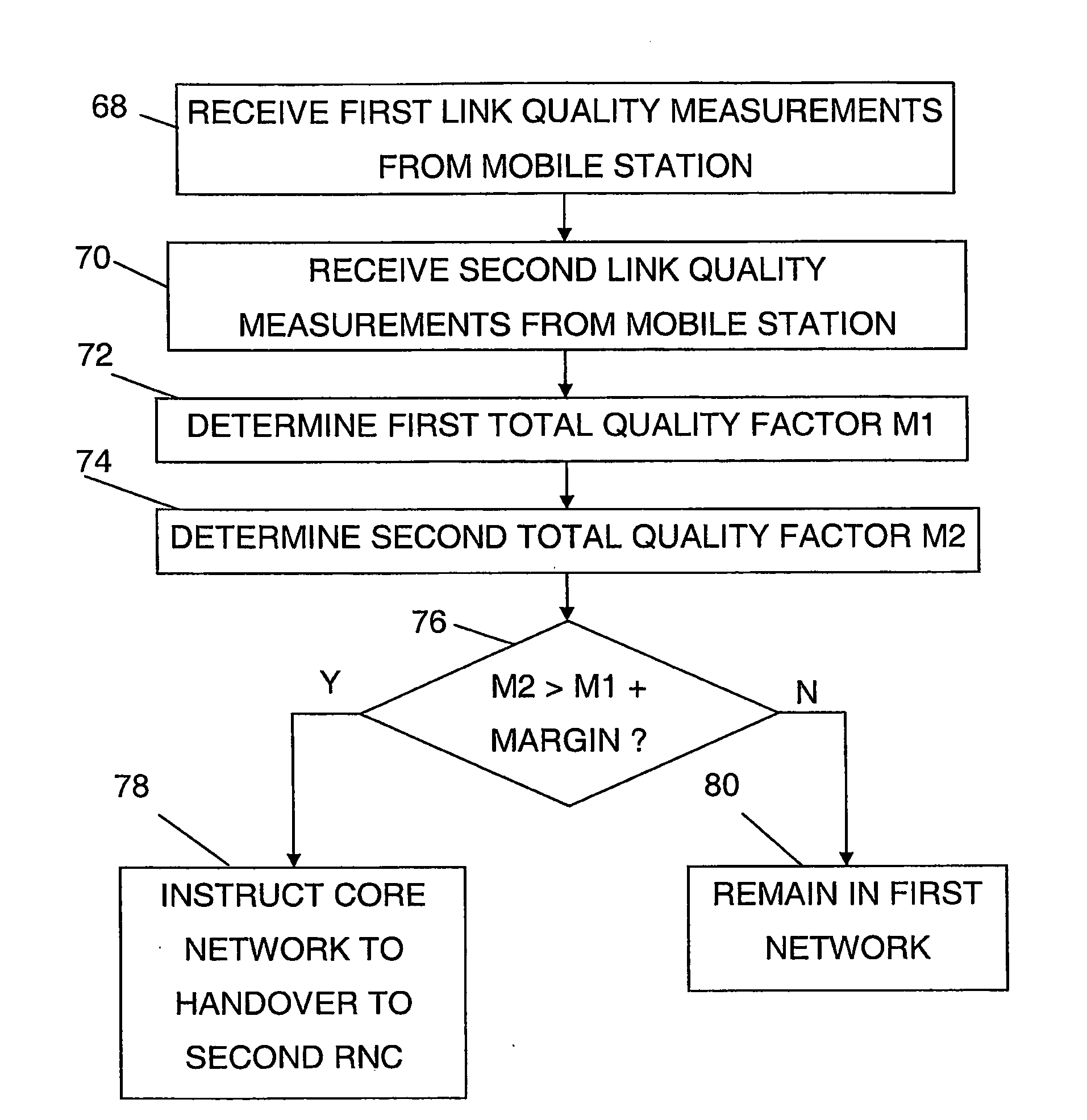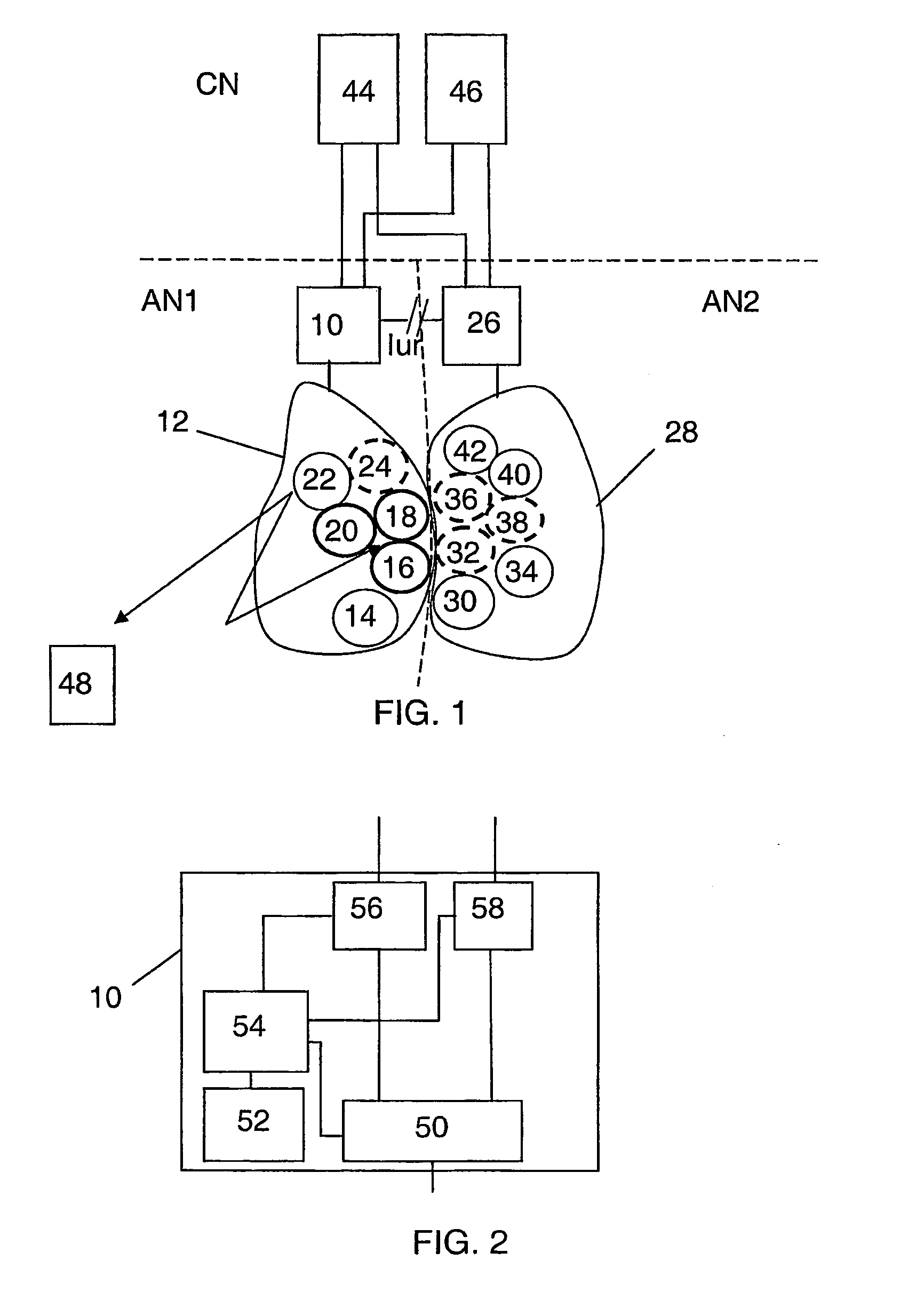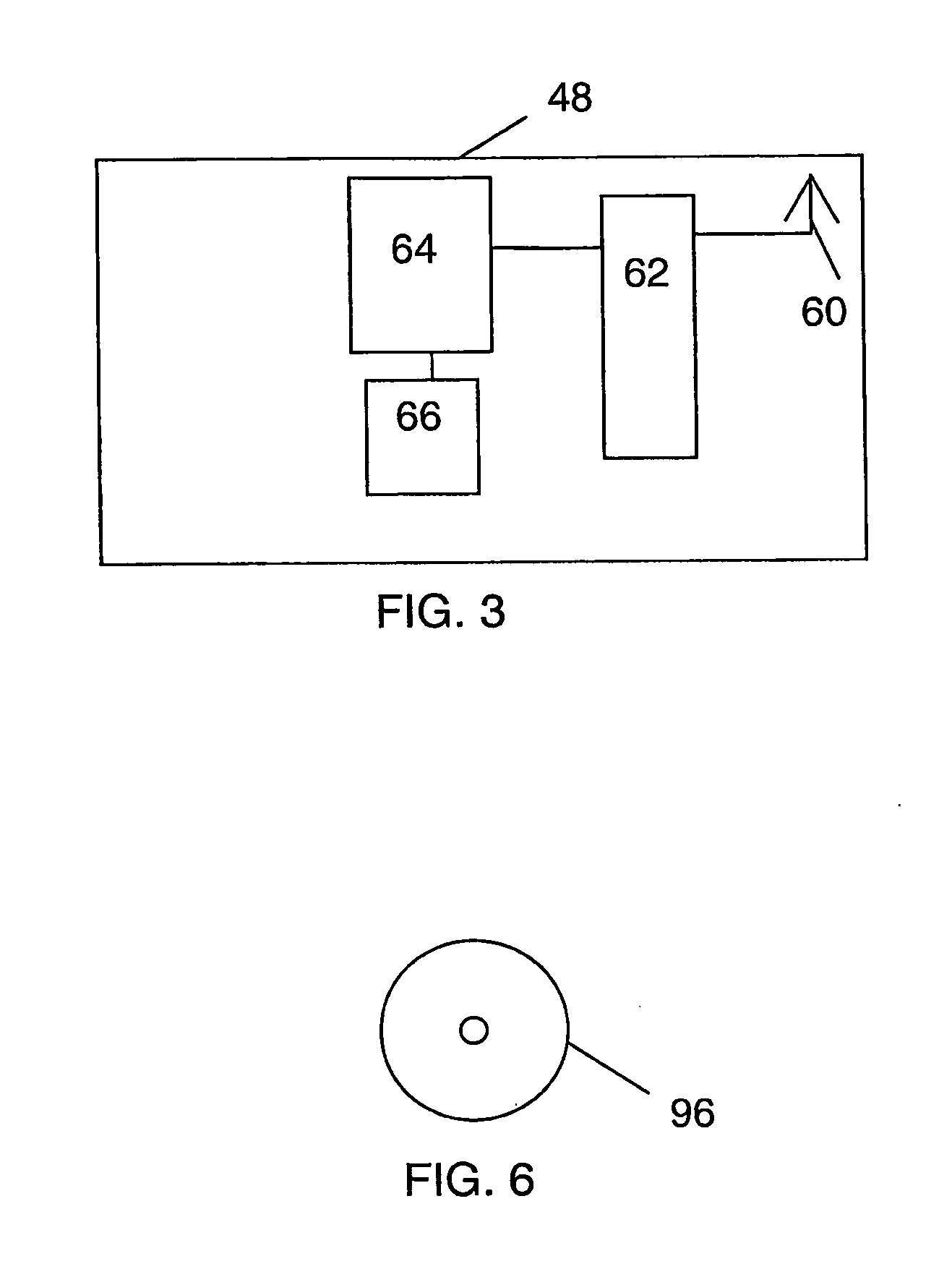Network Evaluated Hard Hardover Using Predictions
a network and prediction technology, applied in the field of handover in telecommunication networks, can solve the problems of not being able to perform soft handover, being vulnerable to interference, and being unable to make the wrong decision, so as to and reduce the risk of making bad handover decisions
- Summary
- Abstract
- Description
- Claims
- Application Information
AI Technical Summary
Benefits of technology
Problems solved by technology
Method used
Image
Examples
first embodiment
[0077]A sequence of basic steps involved in the present invention is illustrated in FIG. 4
[0078]The normal procedure when a user equipment unit is moving towards an area covered by cells handled by another RNC than the one it is currently in contact with is to make soft handover. This means that as the user equipment moves in a network, cells are added to and deleted from the active cells. This is normally done through the user equipment comparing a link quality value of cells with a threshold and reports to the RNC in question, here the first RNC 10, the cells that are above that threshold. The first RNC 10 then adds and removes cells based on this information. It should here be realised that the quality of the connection is not everything that is considered by the RNC when selecting cells to add, but that other factors also influence the selection such as the amount of traffic in a cell. This is furthermore normally done independently of the border between areas covered by a RNC, ...
second embodiment
[0094]It is also possible to perform the handover evaluation in the mobile station instead. A sequence of basic steps involved in the present invention is illustrated in FIG. 5. Here the first access network AN1 authorizes the user equipment unit (UE) to perform an autonomous indication of if handover should be made or not.
[0095]The second handover evaluating unit 66 receives a set of rules to be used when determining if a handover should be performed. The user equipment unit 48 then continuously and independently obtains link quality measurements of cells it is able to communicate with. Some of these cells then belong to the second access network AN2 and some to the first access network AN1. Of these cells in the first network it then forms the first group of cells, including the active cells 16, 18 and 20 and at least one candidate cell 24 and a second group of cells comprising the most promising candidate cells 32, 36, 38 in the second access network AN2. The link quality measure...
PUM
 Login to View More
Login to View More Abstract
Description
Claims
Application Information
 Login to View More
Login to View More - R&D
- Intellectual Property
- Life Sciences
- Materials
- Tech Scout
- Unparalleled Data Quality
- Higher Quality Content
- 60% Fewer Hallucinations
Browse by: Latest US Patents, China's latest patents, Technical Efficacy Thesaurus, Application Domain, Technology Topic, Popular Technical Reports.
© 2025 PatSnap. All rights reserved.Legal|Privacy policy|Modern Slavery Act Transparency Statement|Sitemap|About US| Contact US: help@patsnap.com



